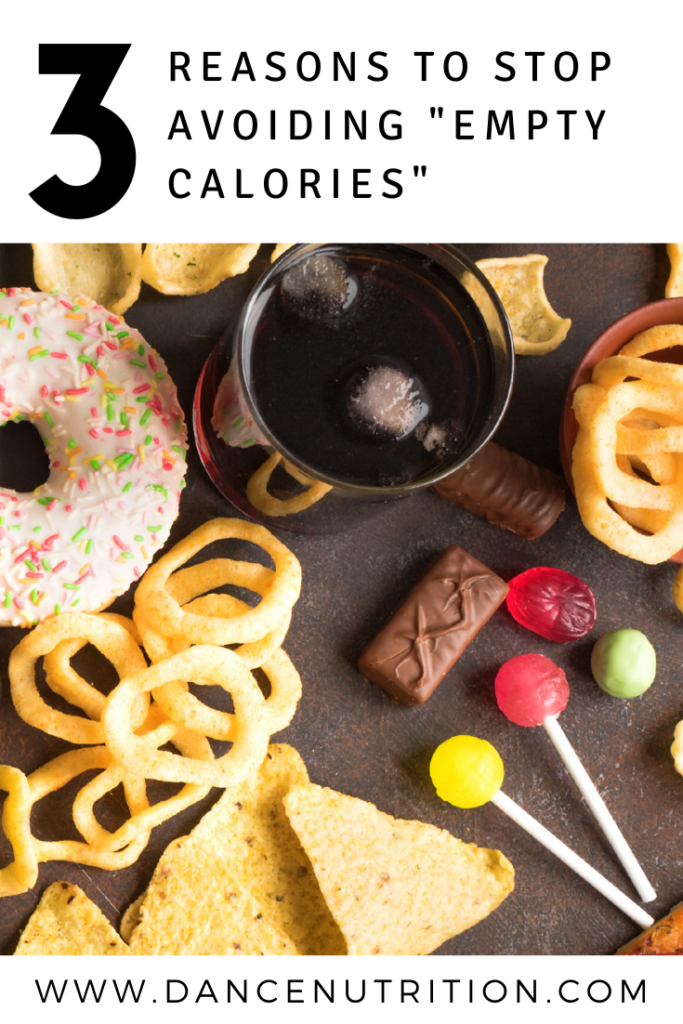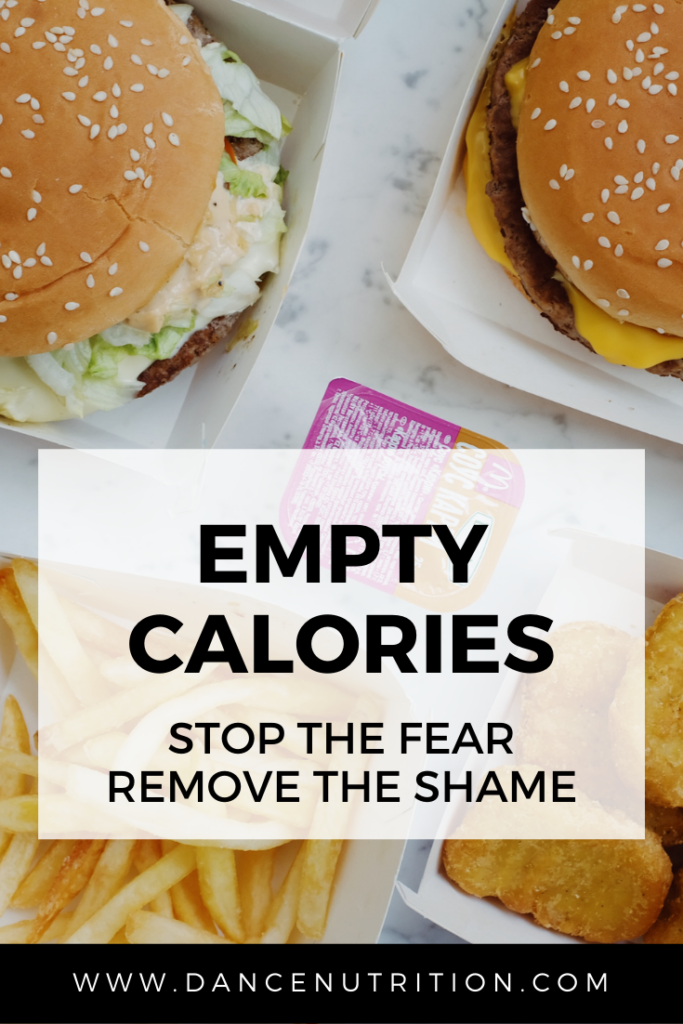For dancers, the desire to fuel for performance can make eating “empty calories” seem counterintuitive. As artistic athletes, dancers optimize their plates for adequate energy and muscle recovery. But when a dancer begins to stress about food, feeling anxious when those nutrient-dense options are unavailable, intentions to eat “healthfully” turn into unhealthy obsessions.
Supposed “empty calories” are often vilified and avoided at all costs. But is this avoidance beneficial, or holding dancers back? While nutrient-dense foods are helpful, it’s equally important for dancers to make room for all foods, even those deemed less nourishing. Let’s dive into why dancers need not avoid “empty” calories.
What Are Empty Calories
Dancer Diet Culture is notorious for polarizing foods into the good (“healthy” options) and the bad (“unhealthy” options). Foods commonly deemed “bad” or “unhealthy” often include sweets, sodas, highly processed foods, and convenience or packaged foods. Since these foods offer fewer nutrients when compared to other foods, they’re often seen as sources of “empty calories.” The term “empty” can be misleading, implying that these foods offer nothing of value, but that’s not entirely true.
The Reality of a Dancer’s Energy Needs
Dancers are athletes. The rigorous training, long rehearsals, and high-intensity performances they endure require significant amounts of energy. Carbohydrates and fats are essential macronutrients that fuel these activities. During rehearsals or performances, dancers might need a quick and easily digestible energy boost. Foods high in simple sugars can provide this rapid energy. For example, a piece of candy or a sugary drink can help replenish glycogen stores quickly.
3 Reasons To Stop Avoiding Empty Calories
#1: They’re practical
Many dancers struggle with limited time and financial access to nutrient-dense minimally processed foods. How can we dismantle the stigmas of our industry if we’re spreading a very elitist and privileged message around our food choices?
Sometimes, nutrient-dense foods aren’t available or practical, especially when dancers are on the go. In these situations, reaching for food that might be considered an empty calorie isn’t the end of the world. It’s better to eat something that provides quick energy than to go without food altogether. Fueling your body is most important, even if that means putting your goals of “nutrition density” aside. Dancer nutrition doesn’t just teach about nutrient optimization, it also works to remove the fear, anxiety, and shame around eating all foods.
#2: Food shouldn’t be stressful
Lesser-processed foods indeed offer the body incredible amounts of bioavailable nutrients. I love these options because they’re high in naturally occurring fibers and proteins: two nutrients that stabilize energy and support muscle recovery. However, fearing food that might not be deemed nutritionally dense provokes shame, guilt, and fear: three ingredients that do not belong on any dancer’s plate.
Enjoying all foods is essential to a balanced diet and no single food or meal will make or break your health or performance. It’s the overall pattern of your diet that matters. Focus Not every eating opportunity needs to be for performance. Healthy is more than just how many nutrients we can pack into one meal. A true “healthy” diet utilizes food to build a social connection and joyful experience. These connections and experiences are far from empty!
#3: It doesn’t have to be all-or-nothing
Constantly avoiding foods labeled as empty calories can lead to an overly restrictive diet. This restriction can create an unhealthy relationship with food, increasing the risk of disordered eating behaviors.
If you’re struggling to include fear foods into your day, consider gentle nutrition as a tool to support the process. If you’re having a snack that’s lower in nutrients, try to pair it with something more nutrient-dense. For example, pair a cookie with a piece of fruit or a handful of nuts to add fiber, vitamins, and fats. Here are few additional tools that can also help:
But what about weight gain?
Fearing weight gain is a common reason for avoiding foods deemed less nourishing. But this fear is deeply rooted in fatphobia. Making (mental) space for your set point (genetically pre-determined) weight is important. I chat more about this here. If you are navigating a fear of weight gain, then read this article.
There’s a lot that goes into your abilities on stage. Concentration, technical advancement, and even bone health all factor into your strength and endurance. Regarding weight, many variables impact it, including genetics, medical history, and dieting history. Shift your focus away from weight and rather on body trust. The more you listen to your body, the more you build trust by feeding it the foods it needs for optimal performance. If you’re confused about what it means to “listen,” then start with these cues.
Key Takeaways
I’m not saying we should strive to eat a diet of 100% highly processed foods 24/7. That will likely not help you feel great physically. For this reason, I encourage you to apply nutrition knowledge in a non-obsessive way (read more about this here). But if you strip away the fear, shame, and anxiety around those “empty-calorie” foods and instead allow them back into your meal plan when the desire strikes, you might surprise yourself. Permitting yourself to enjoy those options will equip you to do so mindfully and move on when satisfied (as opposed to “cleaning your plate” because you’ll “never allow yourself to eat them again.”)




